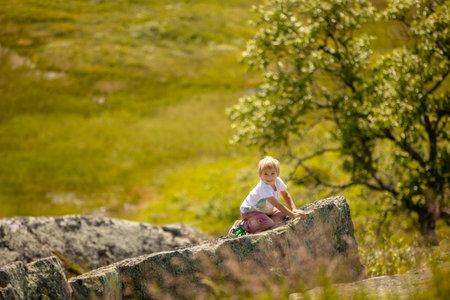Introduction to Walking and Hiking in the British Countryside
There is something profoundly distinctive about setting out on foot across the British countryside. Walking and hiking are woven into the fabric of British culture, offering both residents and visitors a chance to immerse themselves in landscapes steeped in history, natural beauty, and local charm. From rolling hills and ancient woodlands to rugged coastlines and tranquil meadows, Britain’s rural paths invite exploration and reflection alike. These activities are not merely recreational pursuits; they hold cultural significance, serving as a means of connecting with heritage, fostering community spirit, and embracing the great outdoors in all seasons. The popularity of walking and hiking continues to grow, supported by an extensive network of public rights of way, well-maintained trails, and welcoming villages that dot the countryside. Whether you seek solitude among nature or camaraderie on a popular trail, the British countryside provides a uniquely accessible and rewarding environment for walkers and hikers of all abilities.
2. Types of Trails: Footpaths, Bridleways, and National Trails
When exploring the British countryside, it is essential to understand the different types of public rights of way and how to identify them. Each category offers unique opportunities for walkers and hikers, with varying levels of access and permitted activities. Here’s a comprehensive breakdown:
Public Rights of Way
The UK has a rich network of public rights of way that allow people to access the countryside responsibly. These routes are legally protected and can be found across England, Scotland, Wales, and Northern Ireland.
| Type | Description | Who Can Use | Typical Signage |
|---|---|---|---|
| Footpath | A path for walking only, often crossing fields, woodland, or meadows. | Pedestrians only | Yellow arrow (England & Wales) |
| Bridleway | A track or path accessible to walkers, horse riders, and cyclists. | Pedestrians, horse riders, cyclists | Blue arrow (England & Wales) |
| Byway Open to All Traffic (BOAT) | A route open to all users including motor vehicles, but mainly used by walkers and riders. | Pedestrians, horse riders, cyclists, vehicles | Red arrow (England & Wales) |
| Restricted Byway | No motor vehicles allowed; open to walkers, cyclists, horse riders, and non-motorised vehicles. | Pedestrians, horse riders, cyclists, non-motorised vehicles | Purple arrow (England & Wales) |
National Trails and Long-Distance Routes
The UK is home to an impressive selection of National Trails—long-distance walking routes that showcase the best of British landscapes. These are well-maintained paths that often span hundreds of miles across regions of outstanding natural beauty.
| Name | Region(s) | Distance (miles/km) | Main Features |
|---|---|---|---|
| Pennine Way | Northern England | 268 mi / 429 km | Remote moorland, dramatic scenery |
| South West Coast Path | Cornwall, Devon, Dorset, Somerset | 630 mi / 1,014 km | Spectacular coastal views |
| Offa’s Dyke Path | Wales/English border | 177 mi / 285 km | Historic earthwork boundary trail |
| The Ridgeway | Southern England | 87 mi / 139 km | Ancient trackway with chalk downs |
| Cleveland Way | Northeast England | 109 mi / 175 km | Moorland and coastline walking |
Navigating and Identifying Trails in the Field
The majority of public rights of way are clearly marked on Ordnance Survey maps and often indicated on the ground by coloured arrows or signposts. When in doubt:
- Check local council websites or visitor centres: Many provide up-to-date information about access and temporary closures.
- Countryside Code: Always follow signage and respect landowners’ property by keeping to marked trails.
- If using stiles or gates: Ensure you leave them as you find them—closed if closed when you arrived.
- Cyclists and horse riders: Only use bridleways, byways or designated cycle tracks; do not ride on footpaths unless expressly permitted.
- Litter and wildlife: Take rubbish home and observe wildlife from a distance to minimise disturbance.
A Practical Note on Route Planning
If you’re venturing into unfamiliar territory or planning a long-distance hike, invest in a current Ordnance Survey map for your area and familiarise yourself with local signage conventions. Many smartphone apps now offer offline mapping tailored to British rights of way—but always have a backup plan in case technology fails. This practical approach ensures both your safety and the continued enjoyment of these treasured landscapes by all users.

3. Planning Your Walk: Maps, Waymarking, and Navigation
Successful walking and hiking in the British countryside begins with careful planning. The landscape may appear gentle, but unpredictable weather and maze-like rights of way can catch out even seasoned ramblers. Here are practical tips to ensure you remain on track and enjoy your adventure safely.
Choosing and Using Ordnance Survey Maps
The gold standard for navigation in the UK is the Ordnance Survey (OS) map. These detailed maps come in several series, but for walking, the Explorer (1:25,000 scale) and Landranger (1:50,000 scale) are most useful. Explorer maps show field boundaries, footpaths, bridleways, and landmarks like stiles or ancient ruins—vital for route-finding in rural areas. Always check your intended route on an OS map before setting out and consider carrying a waterproof map case given Britain’s changeable climate.
Understanding British Waymarks
The UK’s extensive network of public rights of way is marked by a unique system of waymarks. Footpaths—open to walkers only—are typically indicated by yellow arrows, while bridleways (for walkers, cyclists, and horse riders) use blue. Byways open to all traffic are marked in red or purple. National Trails such as the Pennine Way or South West Coast Path have their own acorn symbol. Waymark posts often appear at field edges, gates, and junctions—learning to spot these helps you avoid accidental trespass.
Practical Navigation Techniques
While many modern walkers rely on GPS devices or smartphone apps like OS Maps or ViewRanger, traditional map and compass skills remain invaluable—especially in areas with poor signal. Practice orienting your map using visible features (church towers, hills) and use a compass to confirm direction when paths become indistinct. In wooded or foggy conditions, pay close attention to contour lines and distances between landmarks.
Staying Oriented in Varied Terrain
Bogs, moorland, woodland, and patchwork fields all present different navigational challenges. On open moors or downs where paths are faint, pace counting or timing sections between features can help maintain accuracy. In farmland with frequent stiles and gates, double-check every junction against your map—rights of way sometimes deviate from obvious tracks due to historic boundaries. If you feel lost, don’t panic: retrace your steps to the last known point rather than pressing on blindly.
Thorough preparation ensures that exploring the British countryside remains a joy rather than a trial. With the right maps, knowledge of waymarks, and sound navigation habits, you’ll be well-equipped for safe and rewarding rambles across Britain’s diverse landscapes.
4. Essential Gear and What to Wear
One of the golden rules for walking or hiking in the British countryside is to be prepared for any weather—sometimes all four seasons in a single day. The right clothing and equipment can make all the difference between a memorable ramble and an uncomfortable trudge. Here’s a practical breakdown to help you kit yourself out properly.
Clothing Recommendations
Layering is key for comfort and adaptability on British trails. Start with a moisture-wicking base layer, add an insulating mid-layer, and finish with a waterproof outer shell. Avoid cotton, as it holds moisture and dries slowly.
| Layer | Recommended Material | Purpose |
|---|---|---|
| Base Layer | Merino Wool/Synthetic | Wicks sweat away from skin |
| Mid Layer | Fleece/Softshell | Keeps you warm |
| Outer Layer | Gore-Tex/Waterproof Jacket | Shields against wind and rain |
Footwear Choices
The ground underfoot can range from muddy bridleways to rocky ridges, so choose your footwear accordingly. For most countryside walks, sturdy waterproof walking boots with good ankle support are ideal. In summer or on less challenging terrain, walking shoes may suffice. Always break in new boots before heading out.
Socks Matter Too
Avoid blisters by opting for moisture-wicking walking socks, preferably wool-blend or technical fibres. Bring an extra pair in case of unexpected wet conditions.
Must-Have Kit List
A well-packed rucksack is essential for safety and comfort. Here’s a checklist to cover the essentials:
| Item | Why You Need It | Top Tip |
|---|---|---|
| Map & Compass (or GPS) | Navigating unmarked routes safely | Don’t rely solely on mobile phones due to patchy signal in remote areas. |
| Water Bottle/Flask | Staying hydrated is crucial, even in cool weather. | A flask of tea is a British classic for morale! |
| Packed Lunch & Snacks | Sustains energy levels over longer walks. | Cake or flapjack is a local favourite treat. |
| First Aid Kit | Treats minor injuries quickly. | Add blister plasters specifically. |
| Poncho or Packable Waterproof Trousers | Coping with sudden downpours. | Packs down small; worth its weight in gold during showers. |
| Sunscreen & Hat | The sun can be deceptively strong on open hillsides. | A peaked cap helps keep drizzle off glasses too. |
| Torch or Headlamp (if walking late) | Essential for safety if daylight fades unexpectedly. | Batteries don’t last forever – check them regularly. |
Dressing for the Unpredictable British Weather
The weather can change rapidly, so always check the forecast before you set off. Even on sunny days, pack at least a lightweight waterproof jacket. Gloves and a hat are recommended outside of summer months, and sunglasses are useful year-round due to glare. Finally, it’s wise to let someone know your route and expected return time—just in case British weather throws one of its famous surprises your way.
5. Countryside Code and Walking Etiquette
Understanding the Countryside Code
The British countryside is a cherished national treasure, and with that comes a shared responsibility to preserve its beauty and accessibility for all. The Countryside Code is an essential guide for anyone exploring rural trails, whether you’re embarking on a short walk or a long-distance hike. At its core, the Code encourages visitors to respect everyone, protect the environment, and enjoy the outdoors responsibly.
Key Principles of the Countryside Code
The Countryside Code sets out clear expectations: leave gates as you find them, keep dogs under control (especially around livestock), and stick to marked footpaths. Littering is strongly discouraged; always take your rubbish home or dispose of it properly in designated bins. If you encounter crops or private property, be mindful not to cause damage or stray from public rights of way.
Walking Etiquette and Local Customs
Politeness goes a long way in rural communities. Offer a friendly greeting—a simple “good morning” or “afternoon”—to fellow walkers and locals you meet on the trail. Yield to farmers at work, cyclists, or horse riders where appropriate; step aside on narrow paths to allow others to pass safely. In busier areas, keep noise levels low to maintain the tranquillity enjoyed by residents and wildlife alike.
Engaging Respectfully with Rural Communities
Many walking routes pass through working farms or near private homes. Always show consideration for local livelihoods: avoid blocking gateways with parked cars, close gates behind you, and do not disturb livestock. If you need to cross a field with animals, move calmly and quickly—never feed or approach them unnecessarily.
Being a Responsible Rambler
Taking these small but important steps helps foster goodwill between walkers and rural communities. By adhering to the Countryside Code and embracing local etiquette, you’ll contribute to a positive walking culture across Britain’s scenic landscapes—ensuring they remain open and welcoming for generations to come.
6. Top Recommended Walks Across the UK
The British countryside is a tapestry of walking trails that stretch from iconic national parks to hidden gems tucked away in rural corners. Whether you’re a seasoned rambler or a novice out for your first stroll, there’s something here for everyone. Let’s explore some of the classic and lesser-known routes across England, Scotland, Wales, and Northern Ireland.
England: From Fells to Coastal Paths
The Lake District – Scafell Pike
As England’s highest peak, Scafell Pike is an enduring favourite among hikers. The climb rewards walkers with panoramic views and a true sense of achievement. For gentler walks, try the Tarn Hows circular path near Coniston, ideal for families and less experienced walkers.
Cotswold Way
This 102-mile National Trail meanders through picturesque villages and rolling hills. Walkers can choose shorter sections, such as Broadway to Stanton, for a quintessentially English experience.
Lesser-Known Gem: South Downs Devil’s Dyke
Devil’s Dyke offers dramatic landscapes just outside Brighton. The circular walk around the dyke is perfect for a half-day outing and showcases stunning views over Sussex.
Scotland: Rugged Highlands and Serene Lochs
West Highland Way
This celebrated long-distance trail stretches 96 miles from Milngavie to Fort William. While some tackle the whole route, shorter segments like Rowardennan to Inverarnan deliver breathtaking Highland scenery without requiring advanced skills.
Lesser-Known Gem: Sandwood Bay
For isolation and wild beauty, few places rival Sandwood Bay in Sutherland. A relatively flat 8-mile round trip leads to an unspoilt beach fringed by towering dunes and sea stacks.
Wales: Mountain Majesty and Coastal Wonders
Snowdon via Llanberis Path
Snowdon is a rite of passage for many walkers in Wales. The Llanberis Path is the most accessible ascent, suitable for beginners while still offering spectacular mountain vistas.
Lesser-Known Gem: Pembrokeshire Coast Path (Stackpole Circular)
This section of the coastal path features limestone cliffs, secluded beaches like Barafundle Bay, and lush woodland—ideal for those seeking variety within a manageable day walk.
Northern Ireland: Dramatic Cliffs and Green Glens
The Causeway Coast Way
This trail links Ballycastle with Portstewart, passing the world-famous Giant’s Causeway and offering rugged coastal panoramas. Shorter stretches such as Ballintoy to Dunseverick are popular for day trips.
Lesser-Known Gem: Glenariff Forest Park Trails
Known as the ‘Queen of the Glens,’ Glenariff offers several marked trails past waterfalls and through ancient woodland—perfect for those seeking tranquillity off the beaten track.
With such diversity on offer across all four nations of the UK, walkers are truly spoilt for choice. Whether you prefer classic routes steeped in history or hidden treasures waiting to be discovered, these trails provide countless opportunities to experience the unique charm of the British countryside at your own pace.
7. Safety, Accessibility, and Further Resources
Venturing out into the British countryside is an invigorating experience, but it’s important to approach every walk or hike with a mindful respect for safety and accessibility. While most trails are well-maintained, weather in the UK can be unpredictable and terrain may vary considerably even within short distances. Always check the local forecast before setting out, pack appropriate waterproof clothing, sturdy footwear, and carry enough water and snacks to sustain you on longer routes. For those unfamiliar with rural walking, sticking to marked footpaths and bridleways is essential—not only for personal safety but also to preserve farmland and natural habitats.
Accessible Walks for All Abilities
The UK has made considerable progress in improving access to its countryside. Many National Parks and Areas of Outstanding Natural Beauty now offer accessible routes designed for people with limited mobility, families with prams, and wheelchair users. Look out for ‘Miles Without Stiles’ walks in places like the Lake District or Peak District—these paths avoid barriers such as steps and stiles, offering gentle gradients and firm surfaces. Local authorities and walking charities such as The Ramblers often provide detailed guides indicating route suitability, surface quality, and available facilities like accessible toilets or nearby parking.
Guidance on Staying Safe
Safety should always be your first priority. Let someone know your planned route and expected return time if you’re heading off the beaten track. Mobile signal can be patchy in remote areas, so consider carrying a paper OS map or downloading offline maps beforehand. Carry a basic first aid kit, torch, whistle, and a fully charged phone. If walking in areas known for livestock or seasonal restrictions (like lambing), familiarise yourself with local signage and guidelines—dogs should generally be kept on leads around animals. Remember: respect for the countryside code helps keep everyone safe.
Trusted Sources for Local Information & Walking Groups
Before embarking on any new trail, consult trusted resources for up-to-date information on route conditions and events. The National Trust, Forestry England, and local council websites are invaluable sources for closures or diversions due to maintenance or weather events. For those seeking company or guidance, joining a local walking group can enhance both confidence and enjoyment—The Ramblers Association and Walking for Health host regular group walks across the country catering to all abilities. Social media groups dedicated to regional walks can also offer tips from experienced locals.
With careful preparation, a commitment to inclusivity, and by tapping into the wealth of local knowledge available, everyone can enjoy the rich tapestry of walking opportunities that the British countryside has to offer.


